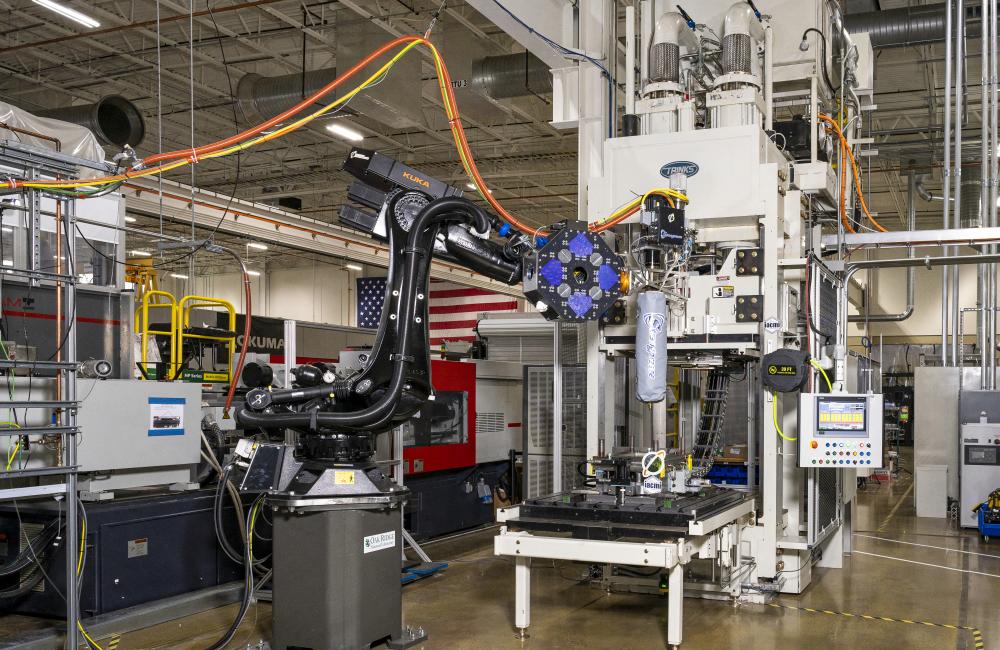ORNL’s additive manufacturing compression molding, or AMCM, technology can produce composite-based, lightweight finished parts for airplanes, drones or vehicles in minutes and could accelerate decarbonization for the automobile and aerospace industries. Credit: ORNL, U.S. Dept. of Energy
Licensed AMCM technology prints finished part in minutes, hastens pace for carbon-free mobility.
An Oak Ridge National Laboratory-developed advanced manufacturing technology, AMCM, was recently licensed by Orbital Composites and enables the rapid production of composite-based components, which could accelerate the decarbonization of vehicles, airplanes and drones.
Additive manufacturing compression molding, or AMCM, uses short-fiber-filled polymer and continuous fiber to print directly onto a mold with precise orientation to make parts such as propellor blades or battery boxes.
Compression molding then turns the print into an accurate finished piece. ORNL researchers proved AMCM significantly reduces time and cost by producing 100 parts in five hours with each piece taking less than three minutes to print.
“By combining the fiber control of additive with the low porosity of compression molding, we can enable the high-volume production of next-generation composites,” ORNL’s Vipin Kumar said. “The mobility and aerospace industries need these lightweight materials to improve the energy efficiency of their applications.”
ORNL collaborated with Orbital to develop AMCM on a robotic system. Additional collaborators included IACMI — The Composites Institute. The research was funded by DOE’s Advanced Materials and Manufacturing Technologies Office (AMMTO) and took place at DOE’s Manufacturing Demonstration Facility at ORNL.





